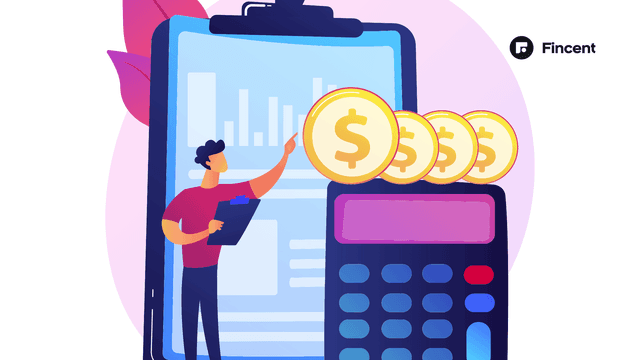- Glossary
- Lean Accounting
Lean Accounting
What Is Lean Accounting?
Lean accounting is an approach to accounting principles and practices that aligns with the principles of lean manufacturing and lean thinking. It focuses on eliminating waste, improving efficiency, and providing value to customers. In contrast to traditional accounting methods that may not fully support lean principles, lean accounting emphasizes simplified and relevant financial reporting, performance metrics, and decision-making tools.
How Does Lean Accounting Work?
Lean accounting involves optimizing accounting procedures inside a business to boost output, customer satisfaction, quality, and revenue. Lean accounting uses a number of "lean methods" to cut down on wastage of time and resources. Lean methods focus on internal processes that enhance your accounting department as a whole rather than reporting obligations, tax laws, or compliance. In the field of finance, lean accounting is a rather contentious alternative to traditional accounting techniques. Since it does not substitute generally accepted accounting principles, it should be utilised in addition to traditional reporting methods.
What Are the Components of Lean Accounting?
Making financial statements simpler to comprehend and pertinent to certain business operations is part of lean accounting. In order to ensure that operations are carried out consistently and in a way that is simpler to understand, it also entails applying lean principles to the accounting department.
Here are some key elements of lean accounting:
- **Lean concepts: **Suggestions for enhancing financial recordkeeping, information flow, and accounting procedures.
- **Lean culture: **Streamlining teamwork and communication to promote an effective work environment.
- **Lean planning: **Connecting lean methods that will help achieve these aims with the business goals.
- **Lean tools: **The techniques utilized to reduce waste within the corporation and make it "leaner."
Lean accounting example
Lean accounting employs a variety of ideas and techniques to boost productivity and profit. Lean accounting employs a different approach to data analysis than conventional accounting.
How inventory is stored and reported is one of the basic tenets of lean accounting. To maximize immediate earnings, a lean corporation will often hold less stock at any particular time.
Also, rather than allocating the value based on specific goods, inventory will be reported on the balance sheet as the overall value of all inventories.
Advantages
- Cost control: Increasing revenues and reducing wasteful spending are the main goals of lean methodologies.
- Improved company culture: The foundation of lean accounting is a lean culture that promotes collaboration, communication, and better procedures.
- Less "waste": Lean methods are meant to cut down on "waste," such as flaws, old equipment, pointless expenditures, and sluggish operations.
- Financial management practices: Management choices made with lean accounting are centred on overall value stream earnings as opposed to cost allocation.
Disadvantages
- Difficult to switch from traditional accounting: Lean accounting conversion will require many new procedures, which could make it challenging and time-consuming to put into practice for everyone to be on the same page.
- High cost of implementation: Although the main goal of lean accounting is to maximize profits, doing so comes at a high and complicated cost. Usually, it will take a lot of time and modest steps to complete.
- Inventory problems: Keep low stock levels to boost immediate profitability as one method of lean accounting. If orders dramatically grow, this might become problematic.
- Having to do 2 sets of financial reports: Under the regulatory requirements of your country, lean accounting reports typically cannot substitute normal reports. If lean accounting is introduced, your accounting staff might need to run two different sets of reports. Standard financial reports are the only ones that the majority of accounting software can produce.
Discarding Traditional Concepts
Examining the rise of Lean accounting, the Journal of Accountancy notes CPAs realizing the obsolescence of standard cost practices. Today, businesses adopt Lean accounting for accurate performance depiction. According to the Association For Manufacturing Excellence, a serious commitment to Lean prompts necessary changes in accounting systems. Traditional views on inventory as an asset clash with Lean principles, where excess inventory is deemed a waste. In Lean accounting, the cost of maintaining inventory is seen as a detriment, challenging traditional notions and aligning with Lean's focus on efficiency.
Main differences between lean accounting and traditional accounting systems
| Basis | Traditional Accounting | Lean Accounting |
| Main features | Large and complex
Requires huge amounts of non-value work | Lean
Fast Timely |
| Object | Takes a long time
Is focused on labor efficiency and overhead absorption | Financial performance and non-financial measures: quality, efficiency, timely, service, etc. |
| Purpose | Maximizes the use of firm’s resources
Match standard costs Matches standard costs | Maximizes “flow”
Promotes continuous improvement Provides value to internal/external customers |
| Focus | Products and costs | Value stream
Processes |
| Tools | Product costs
Standard costs Variance analysis | Value stream costing / Value stream profit & loss
Visual performance measurement / Box score |
| People involved | Controller
Management | Accounting personnel
Value stream team Management |
| Reports | Complex and often late
Use a language not always easy to understand | Clear and easy to understand
Generates frequent reports: On a daily / weekly / monthly basis |


